- Analysis
- World
- South America
- Royal family
This was published 8 months ago
More questions than answers from Harry and Meghan’s Colombian visit
By Victoria Ward
Prince Harry and Meghan’s four-day quasi-royal tour of Colombia generated a stream of glossy images, along with gushing reports of locals cheering and children dancing.
But as the couple head back home to California, questions remain about why they chose to visit this troubled Latin American country and what exactly they managed to achieve.
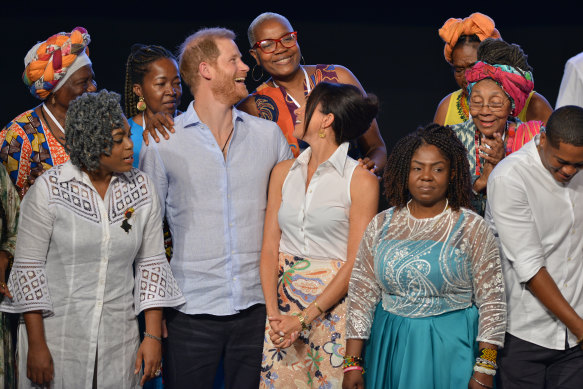
Prince Harry, Duke of Sussex, and wife Meghan, Duchess of Sussex, at the Afro Women and Power Forum during their visit to Colombia.Credit: Getty Images
There were woolly statements about “uplifting communities” and “showcasing the nation’s heritage”.
But why Colombia, and why now? Many feel as baffled today as they did before the couple set foot in Bogota.
Part of the answer may lay in the fact that the entire trip was carefully filtered through their own PR lens.
Unlike a traditional royal tour of old, the media were not invited, save for one handpicked reporter whose job it was to relay each event to newspapers and other outlets across the world.
The chosen journalist was an online reporter from the US publication Harper’s Bazaar, who duly filed a brief overview of each engagement.
As the Sussexes had no doubt intended, it was a saccharine-sweet account that took a broad brush approach to detail.
There were very few quotes from anybody, forcing media organisations keen to present a full account scratching around for snippets of video and local accounts published online in an attempt to piece it all together.
With no access, there is no independent scrutiny.
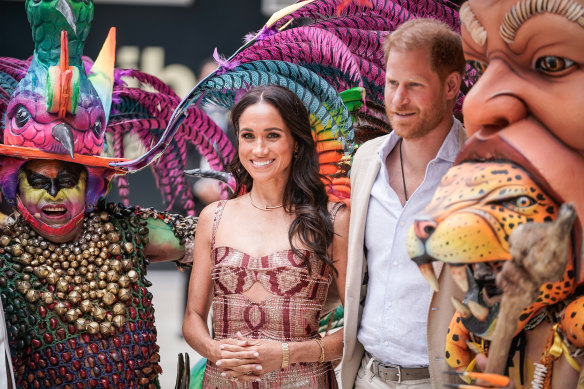
The Duke and Duchess of Sussex pose for a photo at Centro Nacional de las Artes Delia Zapata during a visit to Colombia.Credit: Getty Images
The couple, now operating as private individuals no longer reliant on public funds, can do as they please. It was part of the reason they turned their backs on the royal household and its many constraints, after all.
But by throwing a veil over the tour, they have simply thrown up more questions than answers.
The glimpses of the real heart of the tour, such as Prince Harry’s quotes about social media in an online safety summit in Bogota, surely endeared him to the wider public. Who could not agree with his condemnation of the vile digital sphere in the wake of violent riots that swept the UK following the Southport stabbings?
Yet they were not released by Archewell, the Sussexes’ foundation, or reported by the designated journalist.
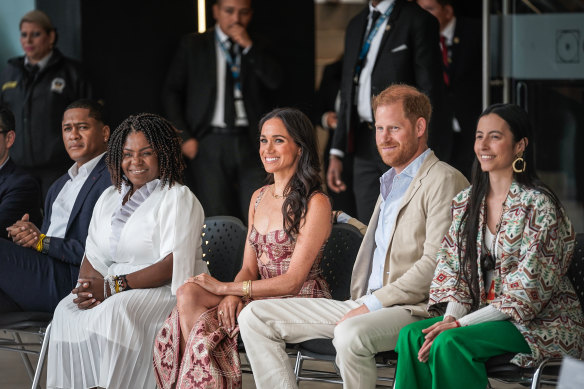
Vice President of Colombia Francia Márquez, Meghan, Duchess of Sussex and Prince Harry, Duke of Sussex attend a folkloric presentation at Centro Nacional de las Artes Delia Zapata.Credit: Getty Images
It all raises the question; what did the Sussexes want the world to see?
At an Afro Women and Power event in Cali on Sunday, Meghan spoke on the importance of using your voice, hailing her husband as a great example of how men can empower women.
She also described her pride in the fact that their three-year-old daughter, Lilibet, had “finally found her voice.”
There were multiple outfit changes every day and many official photographs of the Duke and Duchess, there was a spotlight on their work to improve internet safety and an engagement with Colombia’s Invictus Games team.
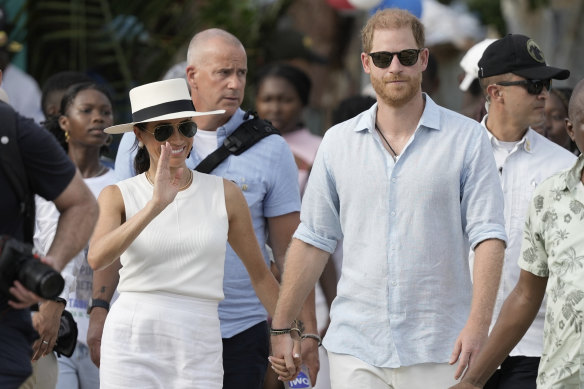
Prince Harry and Meghan arrive in San Basilio de Palenque, Colombia.Credit: AP
But there was no clear thread, no obvious aim.
Colombia is not a country in which the former working royals are well-known. Many, including performers chosen to entertain them, questioned who their VIP guests actually were.
“Who is Meghan?” Justo Valdés, a 70-year-old singer, asked shortly before their arrival in San Basilio de Palenque, the first “free town” in the Americas.
Local journalists admitted that their coverage of the tour had not generated much interest.
One, who did not want to be identified, told The Telegraph that the country faced far more pressing problems.
“People are expecting the government to address these issues rather than focus on a high-profile event with the Duke and Duchess of Sussex,” they said.
“Although addressing and confronting cyberbullying in children is an important issue, it is not the most pressing problem we face.”
One person who was front and centre was the vice-president, Francia Marquez, whose office orchestrated the entire trip. Her motivation is perhaps more transparent.
‘[The royal visit] is part of the showmanship of a vice president who is disconnected from the reality of the country.’
Colombian senator Maria Fernanda Cabal on the country’s vice president, Francia Marquez, who organised the visit of Prince Harry and wife Meghan
By inviting two such high-profile celebrities to tour her country, she has put herself and her own causes firmly in the global spotlight.
She said she viewed the Sussexes as a joint “symbol of resistance” and “rebellion” and felt moved to get in touch after watching their Netflix series, Harry & Meghan.
But Marquez is a divisive figure and her opponents seized upon the invitation as proof that she was not focused on the domestic issues at hand.
Maria Fernanda Cabal, a right-wing senator who has been positioning herself as a future presidential candidate, said: “The invitation to the Duke and Duchess of Sussex brings absolutely no cultural exchange or anything of the sort.
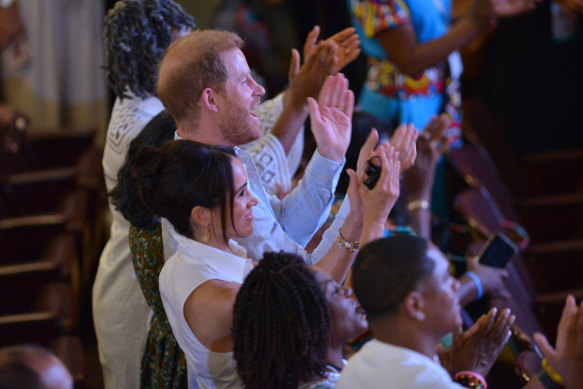
Harry and Meghan at the Afro Women and Power Forum. Credit: Getty Images
“It is part of the showmanship of a vice president who is disconnected from the reality of the country.
“The vice president is black and, as a minority, should set an example of greatness, of affection towards the population, especially the poor, without resentment or hatred.
“She should seek out even minimal projects that the community needs, stand by the people, not by royalty.”
Call for slave trade apology
The couple’s visit to a town founded by escaped slaves in the colonial era prompted some to predict that the duchess would speak about her own family history, having recently revealed she is 43 per cent Nigerian. Research suggests she is descended from cotton slaves.
Prince Harry, too, was considered “uniquely positioned” to speak about reparations, with some even calling for him to apologise for his family’s role in the slave trade.
No such references were made. Instead, the couple were there to “listen and learn” and to experience the culture and community, it was said.
When the couple were in Nigeria in May, Prince Harry said of their decision to travel: “There’s only so much one can do from home and over Zoom. So we look forward to travelling more … there will always be reasons to meet the people at the heart of our work.”
The Telegraph, London
Get a note directly from our foreign correspondents on what’s making headlines around the world. Sign up for the weekly What in the World newsletter here.